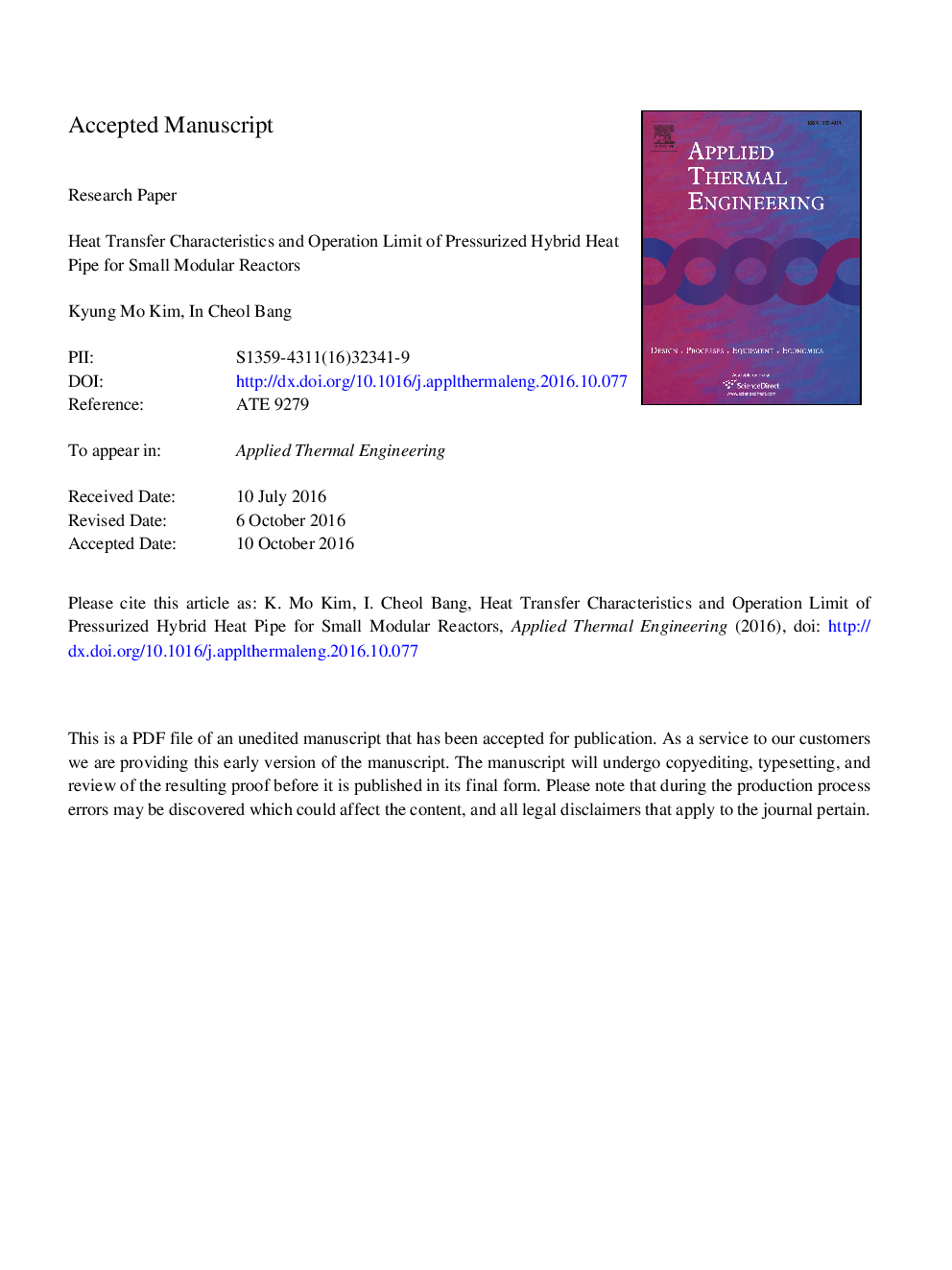| Article ID | Journal | Published Year | Pages | File Type |
|---|---|---|---|---|
| 4991730 | Applied Thermal Engineering | 2017 | 32 Pages |
Abstract
In this paper, a hybrid heat pipe is proposed for use in advanced nuclear power plants as a passive heat transfer device. The hybrid heat pipe combines the functions of a heat pipe and a control rod to simultaneously remove the decay heat generated from the core and shutdown the reactor under accident conditions. Thus, the hybrid heat pipe contains a neutron absorber in the evaporator section, which corresponds to the core of the reactor pressure vessel. The presence of the neutron absorber material leads to differences in the heated diameter and hydraulic diameter of the heat pipe. The cross-sectional areas of the vapor paths through the evaporator, adiabatic, and condenser sections are also different. The hybrid heat pipe must operate in a high-temperature, high-pressure environment to remove the decay heat. In other words, the operating pressure must be higher than those of the commercially available thermosyphons. Hence, the thermal performances, including operation limit of the hybrid heat pipe, were experimentally studied in the operating pressure range of 0.2-20Â bar. The operating pressure of the hybrid heat pipe was controlled by charging the non-condensable gas which is unused method to achieve the high saturation pressure in conventional thermosyphons. The effect of operating pressure on evaporation heat transfer was negligible, while condensation heat transfer was affected by the amount of non-condensable gas in the test section. The operation limit of the hybrid heat pipe increased with the operating pressure. Maximum heat removal capacity of the hybrid heat pipe was up to 6Â kW which is meaningful value as a passive decay heat removal device in the nuclear power plants. Based on the experimentally measured maximum heat removal capacities, models predicting the operation limit (flooding limit) of the hybrid heat pipe were developed.
Related Topics
Physical Sciences and Engineering
Chemical Engineering
Fluid Flow and Transfer Processes
Authors
Kyung Mo Kim, In Cheol Bang,
